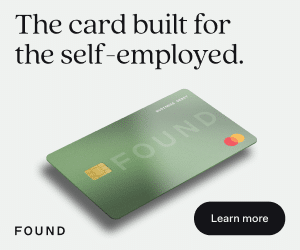Sounds crazy, right? But looking back, I can attribute any and all success I’ve had to what the title of this post is saying.
Bad, Crazy Clients Will Make You Rich
I can also attribute people staying in place, not growing, not succeeding, not achieving to the same exact thing.

Get Weekly Freelance Gigs via Email
Enter your freelancing address and we'll send you a FREE curated list of freelance jobs in your top category every week.
I’ve never read the book Rich Dad, Poor Dad but I get the gist—“rich” people and “poor” people encounter the same situations, but it’s their reaction to them that makes one rich and one poor.
While I think life is more complex than that—and not all rich people are these “enlightened” decision makers and people—I also think there’s a lot of truth to it that I’ve experienced myself.
A smart guy I know recently told me, “There’s no such thing as a bad client. There are only bad processes.”
Adding smarter, better processes to your business is what elevates you and propels you to the next level. Then the next “bad client” comes along and tears it all to pieces and you re-build and add more processes and get to the next level.
And the cycle repeats.
As it does, you get better and better – and every step of the way, you attract better clients, charge more, earn more, experience less headaches. And, on top of all that the “bad clients” seem to disappear more and more.
Here are a few examples so you can see what I mean:
“My client told me they loved the design yesterday. Today they they hate it.”
Has this ever happened to you before?
Has it happened more than once?
If it has – it means you didn’t get the lesson the first time around 😉
We had a client who went through about a dozen design variations, loving it one day then hating it the next, until we finally got her to approve something.
Did we hate this client? Did her emails and calls cause our teeth to grit and our blood to boil? Absolutely. But we also immediately asked ourselves:
“How can we prevent this from ever happening again?”
We enacted an “approval process” that looks like this:
- The client can make changes until they’re happy.
- Once happy, they send us a written “final approval.”
- ANY changes beyond that point are charged for.
When the client says they love something, we say, “Great! Send us an email confirming that and we’ll advance to the development stage.”
If they go haywire on us the next day, we refer to our agreement and “final approval” and tell them we’d be happy to make changes but as they approved it, they’ll be charged for.

Most of the time, they think twice about the changes. But if they decide to go forth with them – we charge them as was agreed upon. That way we don’t waste time doing endless revisions for free.
“I delivered the files because the client said it was urgent and never received final payment.”
Again, this situation leaves no one to blame but yourself. You have to have an impenetrable system in place with absolutely no exceptions about delivering files.
Simply put: Don’t…. until you get payment.
If they need the files urgently – they need to send payment urgently. Ya feel?
There are designers who have heaps of unpaid invoices. I don’t understand it. How many times does it have to happen to you before you change yourself – instead of asking or expecting your clients to change?
People will be people if left to their own devices. To keep them on track, you have to have systems and processes in place.

“The project dragged on for months because the client didn’t get me what I need to do my work.”
I know other designers who experience this every day of the year.
Once again, you have to ask yourself, “How can I ever prevent this from happening again?”
You have to place the responsibility square on your shoulders.
To solve this one, we have in our contract language about delivering required materials / feedback in a “timely manner” which we define as 2 business days.
We state if the project is delayed because the client does not deliver the stuff we need to do our jobs in a “timely manner” – and the project is then extended – we increase the cost.
And I think that’s more than fair. Am I supposed to sit around twiddling my thumbs, not making a living, keeping my schedule full, because a client doesn’t have their shtuff together?
No way!

So take your time, take my time – but I’m going to charge for it.
On the flip side – we’re also fair to the client. We state that if we cause delays by not doing things in a “timely manner” – the client gets a discount.
If we’re not on top of our game – we don’t deserve to get paid in full. The client’s paying us to be on our game. We take that seriously.
Here’s the bottom line…
You always have two choices:
One: Get mad at the client and vent about them to your friends and family and get everyone to tell you, “Yeah! What a jerk!” and then keep doing the same old thing and getting the same old results.
Two: Get mad and vent … but then build in processes that increase your pay each time you deal with a high-maintenance client (rush fees, weekend fees, scope creep fees, etc.)
At least that’s what’s gotten me this far. Hope this helps you do the same.
Keep the conversation going...
Over 10,000 of us are having daily conversations over in our free Facebook group and we'd love to see you there. Join us!




Awewsome post David,
i happened to have talked about this with a fellow designer as regards the limited number of times for changes and cost and he saw it to be wrong on the claim that client is always right.
Where i come from, if you stick to this you’ll get little or no clients. of course they are other designer out there that are willing to make changes anytime without questions.
So how do i tackle this??
I agree with most of this post and feel it’s infinitely better to discuss this than not. I don’t think the idea of “the client can make changes until they’re happy” is realistic for most people and certainly not for most solo developers or even most small teams. If a client can make unlimited, infinite changes, a project can easily go on just that long…indefinitely. There needs to be a limit to how many changes a client can make to a design or framework.
I offer 2-3 revisions at phases and in steps. The number three is very common in almost all forms of media, from sports to law (the “three strikes” laws) and it limits projects from going on for months to being done in a reasonable amount of time such that we can still operate like a business and actually make some profit to operate into the future. We base a design initially on client input of their top 2-3 competitors or those they admire. Then from that they are free to make 2-3 revisions. If after that they still can’t decide, we can cancel the contract or renegotiate. After that sign off, each change costs several hundred dollars.
As usual, awesome article David 🙂
I truly believe that people who fail in business just don’t learn from their mistakes, and fixing bad processes is one of the most important things I try to do in mine.
Wow. I never thought about my process in this way. This are the best advices I ever read. Thank you some much for sharing your experiencies.
This was well written. It encouraged me to continue to better myself and take corrective actions instead of reacting. On a lighter note, I thought the “shtuff” comment was funny and still got the point across.
Haha. I love that word. And “shweet.”
Thanks for the compliments. I’m glad you found it so helpful 🙂 ????
Great piece, thank you.
I rewrote our Design Agreement in December to address many of these same issues. It’s definitely not easy to stay on top of it when we’re super busy, but it was well worth the time.
The other thing I’ve learned to do is separate myself emotionally from these situations, really helps me to respond versus react.
Looking forward to reading more from you.
– Christa
Great job revising your agreement. It seems there’s never enough time for stuff like that, but then you have so much more time when you finally get around to doing it 🙂
Great advice. And thanks! I’m looking forward to reading more of your comments 😀 ????
I had a “Bad” and annoying client, but he actually helped improve my processes and overall product quality.
Then you, my friend, “get it” 🙂 ????
Great job taking that high perspective. It’s not always easy.
Process, process, process! Great article. I work with vehicle wrap production and it’s the same deal. We always have to remain open to new ways of dealing with clients and refining our processes. It makes us happier, more productive, and, best of all, more profitable.
It really does have that effect, doesn’t it? Amazing how it impacts every little part of the business.
Really good David! and positive/constructive. A great simple toolkit to fix these common situations.
A good client I came across recently in the media gave us this little gem, stop venting about a bad situation “Don’t give it anymore energy!” was their quote. We thought about it!
The problem was caused by a third party not doing their job and slowing the project down to the wire. As soon as I stopped ranting and fist grinding about it/them we got on with solving it and plan B worked – the project was on point and on time, no one looking at the drama on stage new about the drama off stage.
So don’t waste energy and resources on frustration, recognize the situation and move to overcome it! You can do it if you let the sting and resentment go.
Ha! That is awesome. So cool that you were able to get it back on track the moment you put that advice to work. Great case study.
It’s like Confucius said: “He who cannot describe the problem will never find the solution to that problem.”
Great insights. Bad clients are real. All you need to do is know exactly when you need to walk away. And never without being paid.
Sometimes you do need to walk away, very well said. I’d add to your statement that it’s also important to learn what you did to allow the situation to happen. I’ve never been in a sticky situation where I didn’t at least bear some responsibility.
The truth of the matter is that with inexperienced designers, some of these issues get worse. Clients can easily pass their boundaries and learn to abuse their situation and take advantage of designers. An agreement/contract is very important and everyone should have theirs in place and stick to it. So many times I have had prospects come to me with horror stories of how they were badly treated by their last designer. This can not be coincidental but sadly true. We are running a business first then we are designers.
Good wake up call right here. Well said.
Spot on. Its tough freelancing because you don’t want to upset your client and risk losing them and possible income.
In my experience though, being honest, upfront, sometimes brutal and setting terms like those suggested not only works – but actually gets more business in the long run.
Clients actually enjoy the transparency and security knowing how the process works.
Good article.
It’s one of the scariest things in the world. I know how you feel. Props for having the courage to do it anyway.
This was an eye opener for someone who is still new to freelancing. We will all get those “bad clients” but the trick is to figure out if they are actually “bad” or if we allowed it to happen. Well thought out and informative!
So true, Robert. Glad you found it informative 🙂
Not what I expected from the headline of the post, glad I read it. Great points that I need to pay closer attention to so that I can get better.
Hey Jeff, intersting feedback – what were you expecting? Maybe I need to make my headlines clearer 🙂
Glad you ended up reading it and finding it really helpful though ????
This was an absolutely fantastic article, David! I know you probably can’t do this, but I would absolutely LOVE to see your contract. I am having a hard time visualizing how exactly you would stipulate certain terms in there.
Thank you, Maria 😀 I’m glad you found it so helpful.
I will see what we can do on the contract part 😉
Excellent tips. I learned them long ago the hard way… on my own. Thanks for the re-affirmations.
I think these kinds of tips can only be learned the hard way. I tip my hat to you and your journey to finding them.
Great insight and ideas, definitely gonna rethink some of my attitudes and processes….thanks!
I like how you said you’re going to re-think your attitudes. That’s a wise statement right there.
I needed to read this, I am a designer with a stack of unpaid invoices, thank you for the reality check.
I wrote this just for you 🙂 So glad to hear it helped ????
Wow, great information David! Thanks for sharing this with us, the readers!
Thanks, Kyle! Glad it was so helpful for you 🙂
Thanks for sharing your thoughts 😀
Good article. Thanks for the helpful insight, David. This will be very useful when I start my own business. I only wish my current employer used some of these tactics more stringently!
LOL I hear ya 😉 Hang in there 🙂 Glad you found htis helpful
Really good insights about how a design business should work. Thanks
🙂 Thanks, Joseph
I like your approach of taking responsibility and turning what is a very frustrating and costly situation into something that allows us to improve and grow.
Thanks, Larry. That’s a great summary of it right there you’ve wirtten 🙂
Great article. I shared it on three different social medias!
Thanks David
Holy cow, you are amazing. Thank you so much, such a high compliment.
Excellent article! Lots of good insightful information that would be helpful to anyone or any business.
Do you have any articles about balancing creative work time with a nonworking family time?
THanks, Mark 🙂 Glad you thought so and really apprecaite you taking the time to communicate it.
I do not have any articles like that at this time.
The best thing i’ve found is to schedule as much as possible.
It’s those unscheduled little things that “pop up” that seem to eat away at personal time and family time.
If everything has a time and a place though, you know when to do what, and it’s easier to find that balance.
It’s something I”m working on and struggle with myself a lot of times, so I’m with ya.
Best,
David
Thanks for the insights. Everybody knows what you mean, better indeed is to do something with it. And that’s completely right.
Spot on 🙂
????
Hi David, good article!
Something I’d add on the 2 choices part on the end is to ‘dehumanise’ the work to help diffuse your own feelings.
I used to manage to team of hardware repair agents who had a direct relationship with the client, and we used to manage the repair queue on a first come first served basis, but layered with a ‘who shouts loudest comes first’ ethic.
The guys used to hate this as anyone complaining would jump to the start of the queue, and endless internal complaining and client slagging off ensued. I taught them to just look at the problem in front of them, at the end of the day its just another component to replace, another set of screws to undo and do up again. Let the client be the client, align yourself with their problems, sympathise, and get on with life.
I apply the same theory to design clients, most are not trying to be annoying, they are simply passing on the stresses of their own situations; soak it up, move on, and keep making money!
Hey Matt,
I hear where you’re coming from and totally see why you might say that. If you have bigger problems than the one you’re describing, that’s a good approach 🙂
Eventualloy though, that kind of system is going to cost you a lot of money!
There has to be a well-organized system in place for how and hwne clients can submit feedback, or projects get crazy and out of hand and just never end.
And no one is happy.
Just my 2 cents at least 🙂
Totally agree though, clients do project their problems onto us, and most of the time that’s exactly waht it is.
I think it’s up to us to breka that cycle and show them ea different way of doing things they may have not evne realized exists.
(Excuse all the typos lol…)
Thanks for sharing your thoughts. Curious what you think about my response!
David